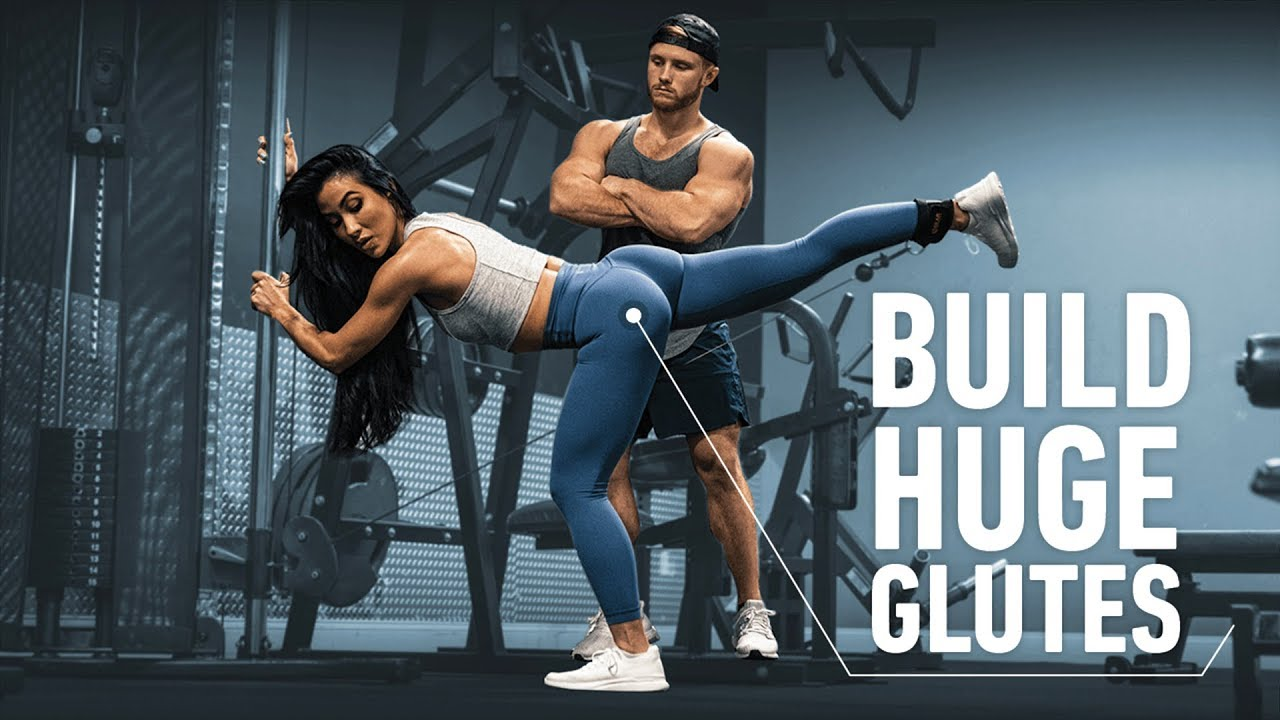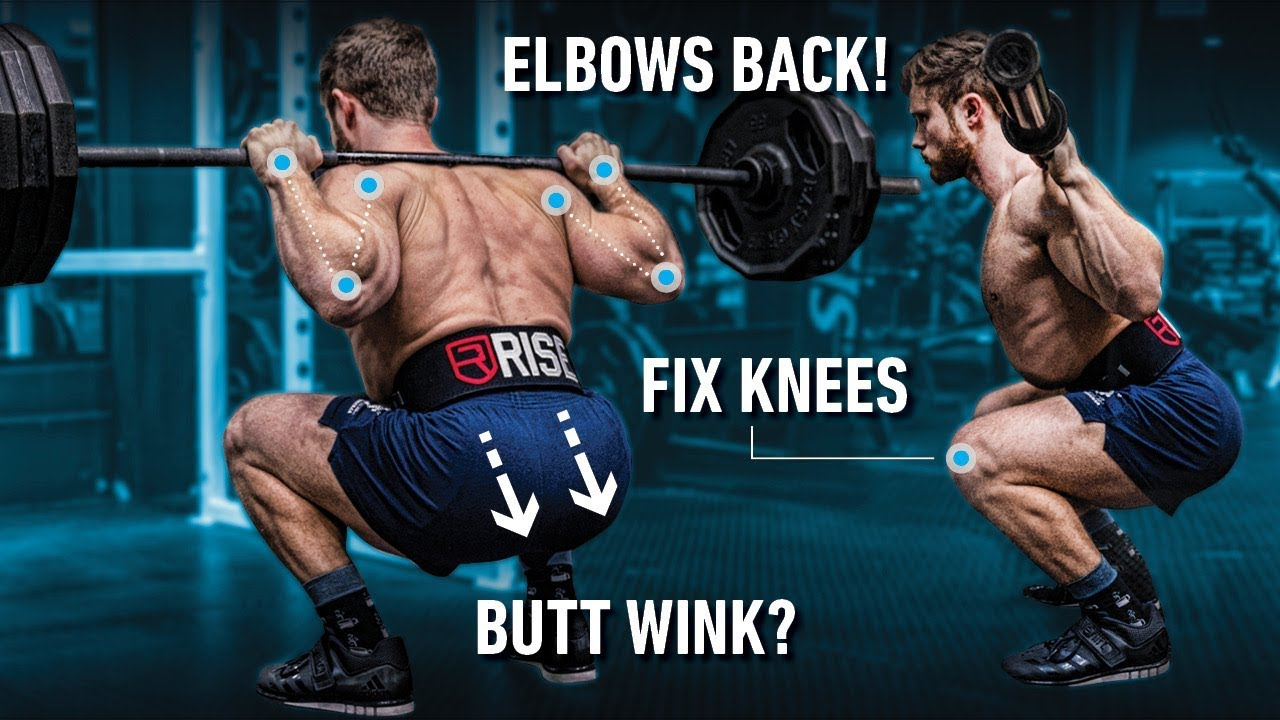If your goal is to build strong, well-shaped glutes, the glute kickback deserves a place in your training program. While big compound lifts like hip thrusts, squats, and deadlifts are excellent for overall development, targeted isolation work can help bring out definition and improve mind-muscle connection. The glute kickback is one of the best exercises for this purpose—when performed correctly.
In this guide, we’ll break down everything you need to know: which muscles it targets, how to set up properly, the best rep range for growth, and common mistakes that might be holding back your glute gains.
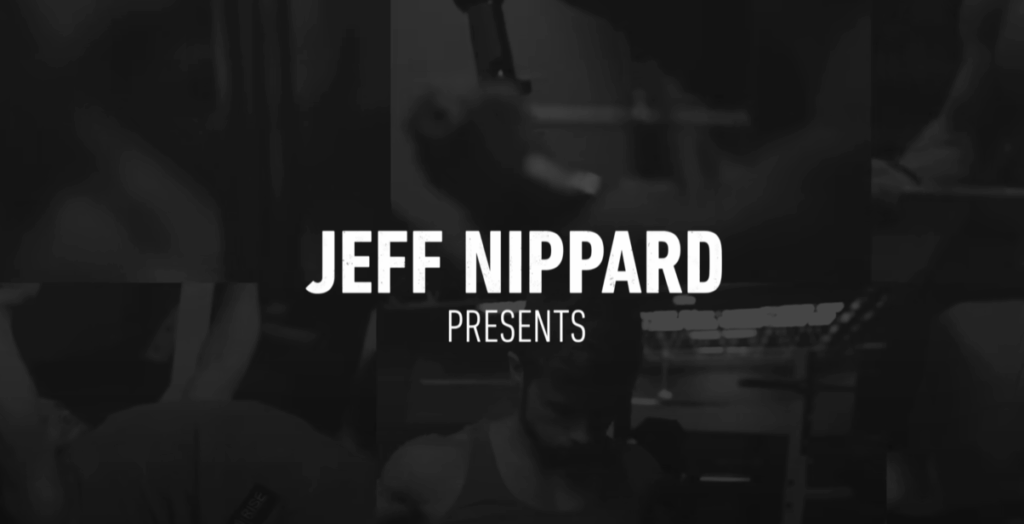
What Muscles Does the Glute Kickback Work?
The glute kickback primarily trains hip extension—moving your leg backward from a bent position to a straightened position. This movement pattern is similar to what happens in hip thrusts or Romanian deadlifts, but with one key difference: the glute kickback isolates the movement, taking other muscles out of the equation as much as possible.
- Main Muscle Worked: The gluteus maximus (responsible for hip extension and the rounded shape of your glutes).
- Secondary Involvement: Some hamstring and quadriceps activation occurs, but if performed correctly, their role is minimal.
Because the goal is to keep tension almost entirely on the glutes, you’ll want to avoid excessive knee extension or “kicking” through your quads. Think of this as a glute isolation exercise, not a full lower-body movement.
Why Add the Glute Kickback to Your Training?
You might wonder—if heavy squats and deadlifts already work the glutes, why do we need an isolation exercise? There are two main reasons:
- Additional Training Volume Without Extra Recovery Stress
Compound lifts heavily tax multiple muscle groups and the nervous system, making recovery more demanding. Glute kickbacks, on the other hand, let you increase volume specifically for your glutes without significantly fatiguing your lower back or quads. - Improved Mind-Muscle Connection for Bigger Lifts
Practicing glute-focused isolation work can improve your ability to consciously activate your glutes. This enhanced connection often carries over to compound lifts, helping you recruit your glutes more effectively during squats, hip thrusts, or Romanian deadlifts.
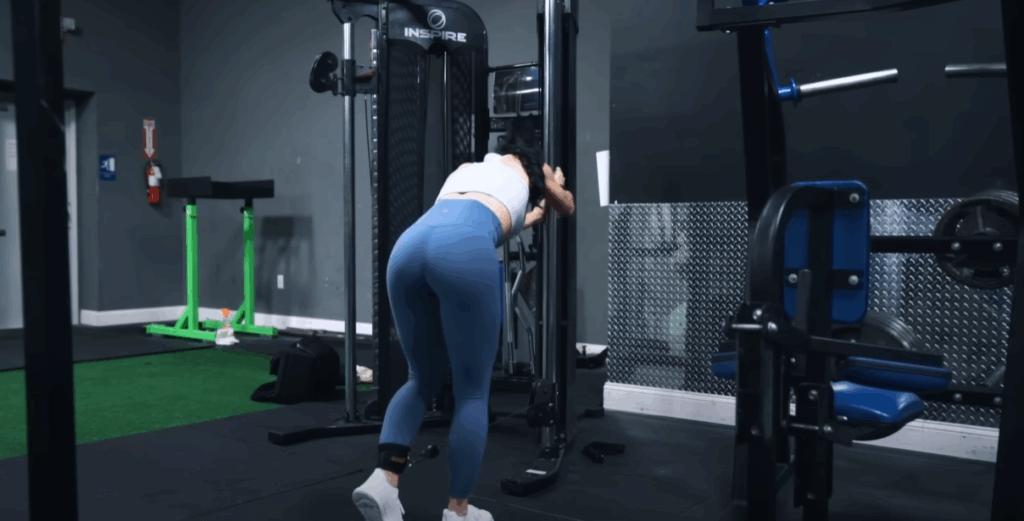
Optimal Rep Range and Progressive Overload
Unlike heavy compound lifts, the glute kickback doesn’t lend itself well to very low-rep, heavy-weight training. Because it’s a single-joint isolation movement, you’ll benefit more from moderate to high rep ranges—around 12 to 20 reps per set.
Instead of adding large amounts of weight, focus on these forms of progressive overload:
- Better Mind-Muscle Connection: Learn to feel your glutes contract hard with every rep.
- Perfected Technique: The more precise your form, the more stimulus you’ll place on the glutes.
- Improved Pump & Controlled Tempo: Gradually increase reps or sets while maintaining strict control.
You can add weight eventually, but once you compromise form, you’re defeating the purpose of this isolation exercise.
How to Set Up for the Glute Kickback
A proper setup ensures you feel the movement where you should—right in the glutes. Here’s how:
- Choose the Right Attachment: Use a comfortable ankle strap that doesn’t dig into your skin. Pain or discomfort will reduce muscle activation, as research shows pain can inhibit muscle recruitment.
- Body Position:
- Lean your torso slightly forward (about 45–60 degrees). This keeps tension more constant through the full range of motion.
- Hold onto the cable machine for balance, keeping your upper body stable.
- Leg Position:
- Start with a soft bend in your knee (don’t lock it out).
- Brace your core to prevent swinging or arching your lower back.
Step-by-Step Guide to Performing the Glute Kickback
- Initiate with the Glutes, Not the Quads
Think about lifting your leg by squeezing your glutes, not by pushing through your foot. Imagine pulling the lower part of your glute toward the upper part. - Swing, Don’t Kick
The name “kickback” can be misleading. A forceful kick tends to shift the work to the quadriceps. Instead, picture your leg swinging back and upward in a controlled arc, which keeps the emphasis on hip extension. - Soft Hamstrings, Relaxed Knees
Avoid tensing your hamstrings too much. Keeping them slightly relaxed shifts the workload to the glutes. - Lateral Angle for Upper Glute Emphasis
A slight outward angle can help target the upper glutes, but don’t exaggerate it to the point of discomfort. Choose the path that gives you the best mind-muscle connection. - Control the Negative (Eccentric Phase)
As you lower your leg, resist the weight instead of letting it drop. Think about stretching the glutes under tension. - Maintain Consistent Tempo
Every rep should be controlled and steady—rep 15 should look just as clean as rep 1.
Common Mistakes to Avoid
Even experienced lifters often make errors that reduce glute activation:
- Kicking Too Hard: If you’re driving the weight back explosively, you’re likely using momentum and shifting tension to the quads.
- Leaning Too Much or Using Upper Body Momentum: Keep your upper body stable and braced against the machine to prevent swinging.
- Adding Too Much Weight Too Soon: Going too heavy compromises form and limits the stretch and contraction you can achieve.
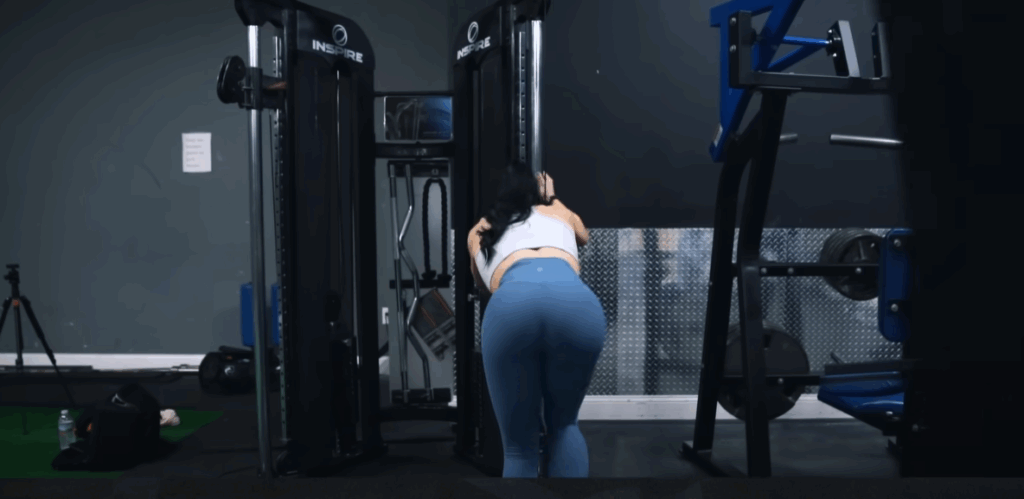
Alternative Variations
While the cable kickback is ideal because it allows a natural movement path, there are a few alternatives:
- Donkey Kickbacks on a Machine: These can be effective but often restrict your range of motion.
- Smith Machine Kickbacks or Leg Curl Machine Setup: These work, but they don’t allow as much freedom to adjust to your body’s structure.
Whenever possible, choose the cable version for maximum customization.
Where to Place Glute Kickbacks in Your Training
Glute kickbacks are best used at the end of a lower-body session as a finisher or as part of a dedicated glute day. Since they aren’t overly fatiguing, they can also be used as a warm-up or activation drill before heavy compound lifts.
A sample glute-focused workout might look like this:
- Hip Thrusts – 3×8–10
- Bulgarian Split Squats – 3×10–12
- Romanian Deadlifts – 3×8–10
- Glute Kickbacks – 3×15–20
Final Thoughts
The glute kickback may look simple, but mastering it can significantly improve your glute development. Focus on quality over quantity—perfect form, a strong contraction, and consistent tempo will give you far better results than piling on weight too soon.
Whether you’re aiming to build fuller, stronger glutes or just want to improve your mind-muscle connection for compound lifts, adding glute kickbacks to your routine can be a game-changer. Train with intent, be patient with progression, and watch your glutes grow.


